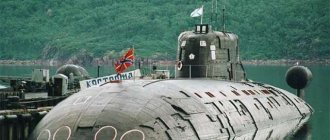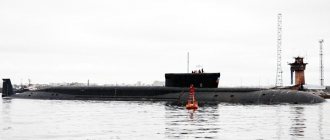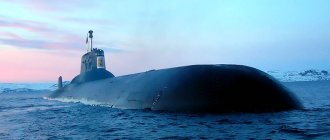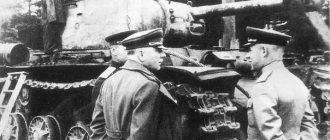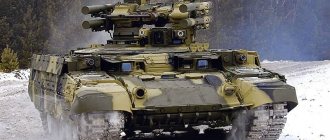Author: Mood Stabilizer
March 19, 2020 10:29
Tags: apl interesting weapons russia navy
12706
7
The Russian submarine fleet is experiencing a renaissance. For the first time in modern Russian history, four modern nuclear submarines are being built at once on the slipways of the Severodvinsk Machine-Building Enterprise. March 19 - the 5th will be laid down on Submariner's Day. The most modern submarine of Project 885 of the Yasen type with the index “M” and the name “Arkhangelsk”.
0
See all photos in the gallery
0
Project 855 ships are the last word in Russian submarine shipbuilding. The quietest and most powerful weapons in terms of composition. They are often compared in terms of combat capabilities with the American submarine “classmates” of the SeaWolf type, the construction of which was abandoned by the United States and Virginia for financial reasons. Experts from the British The Sunday Times once assessed the capabilities of Project 885 submarines: “The new Russian submarine fleet will have eight Yasen series submarines, each of which has 24 Granat long-range cruise missiles with a 200 kiloton warhead. The technical performance of the new submarine is such that it is almost impossible to detect in the World Ocean, which makes Severodvinsk practically invulnerable in the face of the latest anti-submarine weapons systems. Russia has taken the lead in underwater technology." “First of all, the United States is concerned about the appearance of a new Russian submarine,” the publication quotes a source from the intelligence services as saying. “We don’t know half of what’s on board this submarine.” It’s good that there aren’t many such ships yet,” the expert states.
Story
The creation of the appearance of the fourth generation nuclear submarine began back in 1977. To replace several types of boats (PLAT, MPLATRK, anti-aircraft SSGNs), it was planned to create a single multi-purpose boat capable of solving the widest possible range of tasks. The designer of the new type of submarine was the St. Petersburg Marine Engineering Bureau "Malachite", which already had experience in creating multi-purpose submarine projects. Vladimir Pyalov became the chief designer. “Ash” was developed on the basis of projects 705 (K) “Lira”, 971 “Shchuka-B” and is intended to replace both them and project 949A “Antey”. The project uses many technical solutions that have not previously been used in domestic underwater shipbuilding.
Lead submarine of the project
— K-560 “Severodvinsk” was laid down on December 23, 1993 at Sevmash. In 1996, construction of the nuclear submarine was stopped. Work resumed around 2004, using a revised project. On June 15, 2010, the boat was taken out of the boathouse and launched on June 24. Mooring tests have begun. On September 12, 2011, the boat went to sea for the first time for factory testing[9]. Factory testing and modification of the boat took three years. The deadlines have been postponed several times. Along the way, the Onyx and Caliber missile systems were refined and tested, which also affected the timing. On October 10, 2013, the boat successfully completed factory tests and on November 5, 2013 it was transferred to state tests[10]. On December 30, the acceptance certificate was signed. The boat was transferred to the Navy for trial operation[1]. On June 17, 2014 it was accepted into the Russian Navy[11].
Second submarine
— K-561 “Kazan” was laid down on July 24, 2009 according to the modernized project 08851 “Yasen-M”[12]. Project 08851 Yasen-M differs from the basic project by installing updated equipment, optimized contours and further noise reduction[13]. In addition to further improvement of characteristics, an important aspect of the Yasen-M project is the refusal to use equipment suppliers from the countries of the former USSR: the ship is built exclusively by Russian enterprises[14]. Completion and launching, as well as adoption into service, are expected in 2017[15].
Third submarine
— K-573 “Novosibirsk” was laid down on July 26, 2013 according to the modernized project 885 “Yasen-M”[16]. Commissioning is expected no earlier than 2020.
Fourth submarine
— K-571 “Krasnoyarsk” was laid down on July 27, 2014[17][18].
Fifth submarine
— K-564 “Arkhangelsk” was laid down on March 19, 2015[19][20][21].
Sixth submarine
- TO-? "Perm" was laid down on July 29, 2020. Perm will be transferred to the fleet in 2022[22].
At the Army-2015 forum, the general director of Sevmash said that the last, seventh boat, completing the series, will be laid down in 2016. It is planned to commission 6 Ashes by 2020, the seventh is planned to be commissioned before 2023[23].
Design
The boat has a one-and-a-half-hull design with a light hull only in the bow and a superstructure in the area of the missile silos. Case material: low-magnetic steel. A rubber coating is applied to the hull, which reduces the noise of the boat and reduces the reflection of sonar signals. The Irtysh-Amphora hydroacoustic complex with a large spherical antenna is located in the bow. According to other sources, the nuclear submarine is equipped with an Ajax sonar system with additional antennas throughout the nuclear submarine’s hull. The antenna, which occupied the entire bow, did not allow the traditional placement of torpedo tubes in the bow, which is one of the most noticeable distinctive features of the project.
There is only one rescue chamber on the boat; the entire crew can fit in it[24]. The crew size, according to data from various sources, ranges from 64 to 93 people.
Powerplant and engine
The use of a new generation nuclear reactor will improve the reliability of the ship's power system. The service life of the reactor without recharging is about 25-30 years, which is comparable to the service life of a submarine. The single-shaft power system drives the boat via a propeller. To reduce noise at low speeds, a propulsion electric motor is used; the main turbo gear unit is connected via a coupling only in high-speed modes. The nuclear reactor is made using a new technology, in which the primary coolant pipelines are located in the reactor vessel, which significantly reduces the likelihood of accidents and radiation exposure of the crew. A unique multi-purpose information and control system has been created specifically for the boats of this project to monitor the level of radioactive radiation from a nuclear reactor and notify the crew if it is exceeded. The multi-purpose information and control system (MCIS MN) is a multiprocessor system with a three-level structure, which is designed to record the radioactive background and prevent an emergency on the ship. Thanks to the MN IUS, the submarine crew will receive a signal about the threat in a timely manner and will have time to take the necessary measures. The system includes detection devices, power supplies, air flow relay, a set of spare parts and tools. The MN IUS carries out continuous automatic remote monitoring of the radiation and chemical situation, and also allows one to predict doses of radioactive radiation and the time of stay of crew members in emergency zones. In addition, the system provides information about the state of the controlled object, provides recommendations for decision-making, and also conducts continuous self-diagnosis in automatic mode[25].
Power point
The Kazan submarine is equipped with a water-nuclear reactor with an integrated circuit layout and primary circuit pipelines located in the reactor vessel. This design significantly reduces the likelihood of accidents and emergency situations. The information and control system constantly monitors the radiation level. In addition, it significantly reduces noise levels, even at speeds of 25 knots. The service life is comparable to the service life of a submarine and is 30 years. In order to reduce noise, all components and assemblies of the submarine are equipped with noise suppression systems. And at low speeds, the boat has the ability to run on electric motors, which also makes it inconspicuous on enemy radars.
Armament
Ten torpedo tubes of 533 mm caliber are located at an angle on the sides in the area of the fencing of the retractable devices. Behind the fence there are 8 vertical missile silos, each of which houses 4 missiles. The ability to combine missile weapons provides flexibility in performing a wide range of combat missions - from fighting submarines and destroying stationary ground targets to destroying all types of enemy surface ships with cruise missiles of the Caliber and Onyx systems. According to the general director of the submarine designer, the Malakhit design bureau, Vladimir Dorofeev: “The Project 885 Yasen multi-purpose nuclear submarine is capable of using all sea-based cruise missiles in service with the Russian Navy.” [26]
Dive team: The Navy is preparing to receive the Arkhangelsk submarine
The Northern Fleet has begun preparations for the adoption of the newest nuclear submarine Arkhangelsk. By the end of the year, its commander will be appointed, and the formation of the crew will be completed. It is planned that the Yasen-M nuclear submarine of Project 885M will be part of one of the divisions of the Northern Fleet. Already in 2021, personnel will undergo training at the Navy training center. After training, the sailors will go to the plant, where they will receive the submarine and begin testing. Nuclear submarines of this project can destroy enemy warships and vessels, as well as important ground targets, with Caliber and Zircon missiles, experts noted.
Comparative assessment
The American analogues of the Yasen are the multi-purpose submarines of the Seawolf and Virginia classes. Russian and foreign experts more often compare the Yasen with the Seawolf, without giving a clear preference to one of the boats. The noiselessness of the Ash is expected to be comparable to the Virginia or Seawolf, but the Ash is designed for a wider range of tasks. In terms of functions, the Yasen will also partially correspond to the American Ohio submarines, converted to armament with cruise missiles.
| "Seawolf" | "Ash" | "Virginia" | "Barracuda" | "Astyut" | |
| Appearance | |||||
| Years of construction | 1989—2004 | 1993—present | 1999—present | 2007—present | 2001—present |
| Years of service | 1997—present | 2013—present | 2004—present | — | 2010—present |
| Built | 3 | 1 (7 plan) | 12 (30 plan) | 0 (6 plan) | 2 (7 plan) |
| Surface displacement (t) | 7460 | 8600 | 7080 | 4755 | 6500 |
| Displacement underwater (t) | 9130 | 13800 | 7925 | 5300 | 7800 |
| Number / PU missiles | 8 / — | 10 / 8(32) | 4 / 12 | 4 / — | 6 / — |
Technology and cost
The fact that the ships belong to the same project does not mean that they are completely identical. Each new unit has certain advantages over the previous one due to improved technology and the use of more modern types of equipment and weapons. Ships are not built as quickly as some other types of equipment, especially such complex ones as the nuclear submarine of the Yasen project. The Severodvinsk submarine, which was put into service with the Navy last year, cost the treasury 47 billion rubles. The Kazan will cost the same, but it is already known that this ship has improved lines, modernized equipment, and even lower noise. In addition, the production of all submarine components and components has now been transferred to the territory of the Russian Federation, which reduces the risk of leakage of secret information about their design and increases independence from foreign suppliers. There is reason to assume that the cost of each subsequent unit will decrease as the technological cycle improves. This always happens, but there is another side to this phenomenon. At the moment of achieving the greatest perfection, any technology is already outdated, and new developments are already ready for implementation, and this circle repeats endlessly. No matter how successful the 885 Yasen project may be, Russian design bureaus probably already have other ideas. In a few years, they will probably create a new submarine, the characteristics of which will be even better.
Project representatives
| Name | Project | Head No. | Bookmark | Descent | In service | Fleet | State | Notes |
| K-560 "Severodvinsk" | 885 | 160 | 21.12.1993 | 15.06.2010 | 17.06.2014 | KSF | In service[27] | |
| K-561 "Kazan" | 885M | 161 | 24.07.2009 | December 2016[28] | 2018[29][28] | KSF | Under construction | According to data as of 12/02/2015, it was commissioned for electrical installation work[30][ unauthorized source? 1566 days ] |
| K-573 "Novosibirsk" | 885M | 162 | 26.07.2013[31] | 2017—2018 | n/a | Under construction[32] | As of 08/21/2014, hydraulic tests of the durable hull were successfully carried out[33], and it is planned to begin insulation work[34] | |
| K-571 "Krasnoyarsk" | 885M | 163 | 27.07.2014[17] | 2020[23] | n/a | Under construction[35] | Is in the stage of forming a durable body[36] | |
| K-564 "Arkhangelsk" | 885M | 164 | 19.03.2015[19] | 2020[23] | n/a | Under construction | ||
| K- "Perm" | 885M | 165 | 29.07.2016[22] | 2020[23] | n/a | Under construction | ||
| n/a | 885M | n/a | 2016[23] | n/a | — | The decision to build was made. |
Table colors:
White -
not completed or scrapped without being launched
Green -
operating as part of the Navy
Yellow -
operating as part of foreign navies or as a civilian ship
Red -
decommissioned, scrapped or lost
Notes
- ↑. RIA Novosti (December 31, 2013).
- . kommersant.ru (November 17, 2011). Retrieved November 21, 2011.
- . kommersant.ru (November 10, 2011). Retrieved November 21, 2011.
- . www.malachite-spb.ru. Retrieved April 28, 2020.
- Military industrial courier.
. Military-industrial courier (April 24, 2015).
- . TASS. Retrieved June 27, 2020.
- PDF (188 Kb)
- . RIA Novosti (June 25, 2009). Retrieved August 13, 2010.
- . Lenta.ru (July 24, 2009). Retrieved August 13, 2010.
- . Press service of OJSC "PO Sevmash" (July 26, 2013).
- ↑. ITAR-TASS (July 27, 2014). Retrieved July 27, 2014.
- . RIA Novosti (July 27, 2014). Retrieved July 27, 2014.
- ↑
- ↑
- . TASS. Retrieved May 17, 2020.
- bmpd.
. bmpd (December 26, 2019). Retrieved December 26, 2020.
- ↑. TASS (June 16, 2015).
- ↑. RBC. Retrieved June 28, 2020.
- . Independent online publication "DNI24". Retrieved June 27, 2019.
Links
2nd generation 671 “Ruff” • 671RT “Salmon” • 671R • 705, 705K “Lira” 3rd generation 671Р • 685 “Plavnik” • 945 “Barracuda” • 945А “Condor” • 945B “Mars” • 971 “Pike-B” 4th generation 885 "Ash" 2nd generation 661 “Anchar” • 667AT “Pear” • 667M “Andromeda” • 670 “Skat” • 670M “Skat-M/Chaika” • 06704 “Chaika-B” 3rd generation project 949 “Granit” • project 949A “Antey” 4th generation 885 "Ash" Cruiser project 1123 • project 1144 • project 1164 Destroyers project 956 Large anti-submarine ships project 61 • project 1134-B • project 1155 • project 1155.1 Frigates project 22350 • project 11356 Patrol ships project 1135 • project 11540 • project 22160 Corvettes project 20380 • project 20385 • project 20386 Small missile ships and boats project 1234 • project 206-MR • project 1241 • project 1239 • project 11661 • project 21631 • project 22800 Small anti-submarine ships project 1124 • project 1141 • project 1331-M • project 11451 Small patrol ships and boats project 205P • project 1400 • project 10410 • project 12150 • project 21980 • project 03160 Small artillery ships and boats project 1204 • project 21630 Landing ships and boats BDK : project 1171 • project 1174 • project 775 • project 11711
KFOR
and
MDK
: project 572 • project 770 • project 12321 • project 12322DKa
: project 1176 • project 11770 • project 21820
Minesweepers Sea minesweepers : project 254 • project 266 • project 266-M • project 12660
Basic minesweepers
: project 1252 • project 1265 • project 12700
Raid minesweepers
: project 1251 • project 1258 • project 10750
Reconnaissance ships (communication ships) project 394B • project 1826 • project 864 • project 1941 • project 18280 Training ships project 1886U • project 887 • project 888 Submarines SSBN (SSBN) project 667A • project 667B • project 667BD • project 667BDR • project 667BDRM • project 941 • project 955 SSGN project 675 • project 667AT • project 670M • project 06704 • project 949 • project 949A • project 885 PAYMENT project 671 • project 705(K) • project 671RT • project 671RTM(K) • project 685 • project 945 • project 971 • project 945A diesel-electric submarine project 641 • project 641B • project 690 • project 877 • project 20120 • project 865 • project 636 • project 677
Second "Kazan"
The K-561 submarine is not the first with this name. The submarine K-403 was also called “Kazan”. This second-generation nuclear-powered boat, serving in the Northern Fleet of the Navy of the Union of Soviet Socialist Republics and then the Russian Federation, served faithfully from 1971 to 2005 and completed many test and combat raids. Today, the K-403 cabin is installed as a memorial in Victory Park in Kazan. I would like to wish the K-561 - the first modernized Kazan of the fourth generation of Russian nuclear submarines - the same long, almost accident-free life and seven feet under the keel!
An excerpt characterizing Project 885 Yasen submarines
“I have the honor to appear,” Prince Andrei repeated quite loudly, handing over the envelope. - Oh, from Vienna? Fine. After, after! Kutuzov went out with Bagration onto the porch. “Well, prince, goodbye,” he said to Bagration. - Christ is with you. I bless you for this great feat. Kutuzov's face suddenly softened, and tears appeared in his eyes. He pulled Bagration to him with his left hand, and with his right hand, on which there was a ring, apparently crossed him with a familiar gesture and offered him a plump cheek, instead of which Bagration kissed him on the neck. - Christ is with you! – Kutuzov repeated and walked up to the carriage. “Sit down with me,” he said to Bolkonsky. – Your Excellency, I would like to be useful here. Let me stay in the detachment of Prince Bagration. “Sit down,” said Kutuzov and, noticing that Bolkonsky was hesitating, “I need good officers myself, I need them myself.” They got into the carriage and drove in silence for several minutes. “There is still a lot ahead, there will be a lot of things,” he said with an senile expression of insight, as if he understood everything that was happening in Bolkonsky’s soul. “If one tenth of his detachment comes tomorrow, I will thank God,” added Kutuzov, as if speaking to himself. Prince Andrei looked at Kutuzov, and he involuntarily caught his eye, half an arshin away from him, the cleanly washed assemblies of the scar on Kutuzov’s temple, where the Izmail bullet pierced his head, and his leaking eye. “Yes, he has the right to talk so calmly about the death of these people!” thought Bolkonsky. “That’s why I ask you to send me to this detachment,” he said. Kutuzov did not answer. He seemed to have already forgotten what he had said and sat thoughtful. Five minutes later, smoothly rocking on the soft springs of the stroller, Kutuzov turned to Prince Andrei. There was no trace of excitement on his face. With subtle mockery, he asked Prince Andrei about the details of his meeting with the emperor, about the reviews he had heard at court about the Kremlin affair, and about some common women he knew. Kutuzov, through his spy, received news on November 1 that put the army he commanded in an almost hopeless situation. The scout reported that the French in huge numbers, having crossed the Vienna bridge, headed towards Kutuzov’s route of communication with the troops coming from Russia. If Kutuzov had decided to stay in Krems, then Napoleon’s army of one and a half thousand would have cut him off from all communications, surrounded his exhausted army of forty thousand, and he would have been in Mack’s position near Ulm. If Kutuzov had decided to leave the road that led to communications with troops from Russia, then he had to enter without a road into the unknown regions of the Bohemian Mountains, defending himself from superior enemy forces, and abandon all hope of communication with Buxhoeveden. If Kutuzov had decided to retreat along the road from Krems to Olmutz to join forces with troops from Russia, then he risked being warned on this road by the French who had crossed the bridge in Vienna, and thus being forced to accept battle on the march, with all the burdens and convoys, and dealing with an enemy three times his size and surrounding him on both sides. Kutuzov chose this last exit. The French, as the spy reported, having crossed the bridge in Vienna, were marching in an intensified march towards Znaim, which lay on Kutuzov’s retreat route, more than a hundred miles ahead of him. To reach Znaim before the French meant to have great hope of saving the army; to allow the French to warn themselves in Znaim would probably mean exposing the entire army to a disgrace similar to that of Ulm, or to general destruction. But it was impossible to warn the French with their entire army. The French road from Vienna to Znaim was shorter and better than the Russian road from Krems to Znaim. On the night of receiving the news, Kutuzov sent Bagration’s four-thousand-strong vanguard to the right over the mountains from the Kremlin-Znaim road to the Vienna-Znaim road. Bagration had to go through this transition without rest, stop facing Vienna and back to Znaim, and if he managed to warn the French, he had to delay them as long as he could. Kutuzov himself, with all his hardships, set out for Znaim. Having walked with hungry, shoeless soldiers, without a road, through the mountains, on a stormy night forty-five miles, having lost a third of the stragglers, Bagration went to Gollabrun on the Vienna Znaim road several hours before the French approached Gollabrun from Vienna. Kutuzov had to walk another whole day with his convoys to reach Znaim, and therefore, in order to save the army, Bagration, with four thousand hungry, exhausted soldiers, had to hold off for a day the entire enemy army that met him in Gollabrun, which was obvious , impossible. But a strange fate made the impossible possible. The success of that deception, which gave the Vienna bridge into the hands of the French without a fight, prompted Murat to try to deceive Kutuzov in the same way. Murat, having met Bagration’s weak detachment on the Tsnaim road, thought that it was the entire army of Kutuzov. In order to undoubtedly crush this army, he waited for the troops that had fallen behind on the road from Vienna and for this purpose proposed a truce for three days, with the condition that both troops would not change their positions and would not move. Murat insisted that negotiations for peace were already underway and that, therefore, avoiding useless shedding of blood, he was offering a truce. The Austrian general Count Nostitz, who was stationed at the outposts, believed the words of the envoy Murat and retreated, revealing Bagration’s detachment. Another envoy went to the Russian chain to announce the same news about peace negotiations and offer a truce to the Russian troops for three days. Bagration replied that he could not accept or not accept a truce, and with a report of the proposal made to him, he sent his adjutant to Kutuzov. The truce for Kutuzov was the only way to gain time, give Bagration’s exhausted detachment a rest and allow convoys and loads to pass through (the movement of which was hidden from the French), although there was one extra march to Znaim. The offer of a truce provided the only and unexpected opportunity to save the army. Having received this news, Kutuzov immediately sent Adjutant General Wintzingerode, who was with him, to the enemy camp. Wintzingerode had to not only accept the truce, but also offer terms of surrender, and meanwhile Kutuzov sent his adjutants back to hurry as much as possible the movement of the convoys of the entire army along the Kremlin-Znaim road. The exhausted, hungry detachment of Bagration alone had to, covering this movement of the convoys and the entire army, remain motionless in front of an enemy eight times stronger. Kutuzov's expectations came true both regarding the fact that the non-binding offers of surrender could give time for some of the convoys to pass through, and regarding the fact that Murat's mistake was to be revealed very soon. As soon as Bonaparte, who was in Schönbrunn, 25 versts from Gollabrun, received Murat’s report and the draft truce and capitulation, he saw the deception and wrote the following letter to Murat: Au prince Murat. Schoenbrunn, 25 brumaire en 1805 a huit heures du matin. “II m'est impossible de trouver des termes pour vous exprimer mon mecontentement. Vous ne commandez que mon avant garde et vous n'avez pas le droit de faire d'armistice sans mon ordre. Vous me faites perdre le fruit d'une campagne. Rompez l'armistice sur le champ et Mariechez a l'ennemi. Vous lui ferez declarer, que le general qui a signe cette capitulation, n'avait pas le droit de le faire, qu'il n'y a que l'Empereur de Russie qui ait ce droit. “Toutes les fois cependant que l'Empereur de Russie ratifierait la dite convention, je la ratifierai; mais ce n'est qu'une ruse.Mariechez, detruisez l'armee russe… vous etes en position de prendre son bagage et son artiller. “L'aide de camp de l'Empereur de Russie est un... Les officiers ne sont rien quand ils n'ont pas de pouvoirs: celui ci n'en avait point... Les Autrichiens se sont laisse jouer pour le passage du pont de Vienne , vous vous laissez jouer par un aide de camp de l'Empereur. Napoleon." [To Prince Murat. Schönbrunn, 25 Brumaire 1805 8 am. I can't find words to express my displeasure to you. You command only my vanguard and have no right to make a truce without my order. You are making me lose the fruits of an entire campaign. Immediately break the truce and go against the enemy. You will tell him that the general who signed this surrender did not have the right to do so, and no one has the right to do so, with the exception of the Russian emperor. However, if the Russian emperor agrees to the mentioned condition, I will also agree; but this is nothing more than a trick. Go, destroy the Russian army... You can take its convoys and its artillery. The adjutant general of the Russian emperor is a deceiver... Officers mean nothing when they do not have authority; he also does not have it... The Austrians allowed themselves to be deceived when crossing the Vienna bridge, and you allow yourself to be deceived by the emperor’s adjutants. Napoleon.] Bonaparte's adjutant galloped at full speed with this menacing letter to Murat. Bonaparte himself, not trusting his generals, moved with his entire guard to the battlefield, fearing to miss the ready victim, and Bagration’s 4,000-strong detachment, cheerfully laying fires, dried, warmed up, cooked porridge for the first time after three days, and none of the people in the detachment knew and did not think about what lay ahead of him. At four o'clock in the evening, Prince Andrei, having insisted on his request from Kutuzov, arrived in Grunt and appeared to Bagration. Bonaparte's adjutant had not yet arrived at Murat's detachment, and the battle had not yet begun. Bagration’s detachment knew nothing about the general course of affairs; they talked about peace, but did not believe in its possibility. They talked about the battle and also did not believe that the battle was close. Bagration, knowing Bolkonsky to be a beloved and trusted adjutant, received him with special superiority and condescension, explained to him that there would probably be a battle today or tomorrow, and gave him complete freedom to be with him during the battle or in the rearguard to observe the retreat order , “which was also very important.” “However, today, probably, there will be no business,” said Bagration, as if reassuring Prince Andrei. “If this is one of the ordinary staff dandies sent to receive a cross, then he will receive a reward in the rearguard, and if he wants to be with me, let him... come in handy, if he is a brave officer,” thought Bagration. Prince Andrei, without answering anything, asked the prince’s permission to go around the position and find out the location of the troops so that, in case of an assignment, he would know where to go. The officer on duty of the detachment, a handsome man, smartly dressed and with a diamond ring on his index finger, who spoke poor but willing French, volunteered to escort Prince Andrei. From all sides one could see wet officers with sad faces, as if they were looking for something, and soldiers dragging doors, benches and fences from the village. “We can’t, prince, get rid of these people,” said the headquarters officer, pointing to these people. - The commanders are disbanding. But here,” he pointed to the sutler’s pitched tent, “they will huddle and sit. This morning I kicked everyone out: look, it’s full again. We must drive up, prince, to scare them. One minute. “Let’s stop by and I’ll take some cheese and a roll from him,” said Prince Andrei, who had not yet had time to eat. - Why didn’t you say anything, prince? I would offer my bread and salt. They got off their horses and went under the sutler's tent. Several officers with flushed and exhausted faces sat at tables, drinking and eating. “Well, what is this, gentlemen,” said the staff officer in a tone of reproach, like a man who has already repeated the same thing several times. - After all, you can’t go away like that. The prince ordered that no one should be there. Well, here you are, Mr. Staff Captain,” he turned to the small, dirty, thin artillery officer, who, without boots (he gave them to the sutler to dry), wearing only stockings, stood in front of those who entered, smiling not entirely naturally. - Well, don’t you feel ashamed, Captain Tushin? - the staff officer continued, - it seems like you should set an example as an artilleryman, but you are without boots. They will sound the alarm, and you will look very good without boots. (The staff officer smiled.) Please go to your places, gentlemen, that’s it, that’s it,” he added in a commanding manner. Prince Andrey involuntarily smiled, looking at Captain Tushin’s staff. Silently and smiling, Tushin, shifting from bare foot to foot, looked questioningly with large, intelligent and kind eyes, first at Prince Andrei, then at the officer’s headquarters. “The soldiers say: when you understand, you become more dexterous,” said Captain Tushin, smiling and timid, apparently wanting to switch from his awkward position to a humorous tone. But he had not yet finished speaking when he felt that his joke was not accepted and did not come out. He was embarrassed. “Please leave,” said the staff officer, trying to maintain his seriousness. Prince Andrei looked again at the figure of the artilleryman. There was something special about her, not at all military, somewhat comic, but extremely attractive. The staff officer and Prince Andrey mounted their horses and rode on. Having left the village, constantly overtaking and meeting walking soldiers and officers of different commands, they saw to the left, reddening with fresh, newly dug up clay, fortifications under construction. Several battalions of soldiers wearing only their shirts, despite the cold wind, swarmed around these fortifications like white ants; From behind the shaft, unseen, shovels of red clay were constantly being thrown out. They drove up to the fortification, examined it and moved on. Just beyond the fortification they came across several dozen soldiers, constantly changing and running away from the fortification. They had to hold their noses and start their horses at a trot in order to ride out of this poisoned atmosphere. “Voila l'agrement des camps, monsieur le prince, [This is the pleasure of the camp, prince," said the officer on duty. They rode out to the opposite mountain. The French were already visible from this mountain. Prince Andrei stopped and began to examine. “Here is our battery,” said the headquarters officer, pointing to the highest point, “that same eccentric who was sitting without boots; You can see everything from there: let's go, prince. “I humbly thank you, I’ll travel alone now,” said Prince Andrei, wanting to get rid of the officer’s staff, “please don’t worry.” The staff officer fell behind, and Prince Andrei went alone. The further he moved forward, closer to the enemy, the more orderly and cheerful the appearance of the troops became. The greatest disorder and despondency was in that convoy in front of Znaim, which Prince Andrei drove around in the morning and which was ten miles from the French. Grunt also felt some anxiety and fear of something. But the closer Prince Andrei came to the chain of the French, the more self-confident the appearance of our troops became. Soldiers in greatcoats stood in a row, and the sergeant major and the company commander were counting people out, poking a finger in the chest of the soldier on the outermost section and ordering him to raise his hand; scattered throughout the space, the soldiers carried firewood and brushwood and built booths, laughing and talking merrily; Dressed and naked people sat around the fires, drying shirts and tucks, or mending boots and overcoats, and crowded around the boilers and cooks. In one company, lunch was ready, and the soldiers with greedy faces looked at the smoking cauldrons and waited for the sample, which the captain brought in a wooden cup to the officer sitting on a log opposite his booth. In another, happier company, since not everyone had vodka, the soldiers stood in a crowd around a pockmarked, broad-shouldered sergeant-major, who, bending a barrel, poured into the lids of the mannequins, which were placed one by one. The soldiers with pious faces brought the manners to their mouths, knocked them over and, rinsing their mouths and wiping themselves with the sleeves of their greatcoats, walked away from the sergeant-major with cheerful faces. All the faces were so calm, as if everything was happening not in sight of the enemy, before a task where at least half of the detachment had to remain in place, but as if somewhere in their homeland, waiting for a calm stop. Having passed the Jaeger regiment, in the ranks of the Kyiv grenadiers, brave people engaged in the same peaceful affairs, Prince Andrei, not far from the tall, different from the other booth of the regimental commander, ran into the front of a platoon of grenadiers, in front of which lay a naked man. Two soldiers held him, and two waved flexible rods and struck him rhythmically on his bare back. The person being punished screamed unnaturally. The fat major walked in front of the front and, without ceasing and not paying attention to the shouting, said:
Current state
According to data as of the end of August 2020, there are no ships of Project 885 in the combat formation of the Russian Navy; the first-born of the Yasen series is not on combat duty due to the prolonged development and adjustment of systems and mechanisms. The lead ship of the modernized Project 885M has been launched and is undergoing factory tests. Five more ships are being built according to Project 885M. In total, 7 Ashes are planned to be built by 2020. In June 2019, at the Army-2019 forum, it was announced that a contract had been signed between the Ministry of Defense of the Russian Federation and the United Shipbuilding Corporation (USC) for the construction of two more submarines of this type in addition to those already contracted, i.e. In total, the Navy will have nine Yasen and Yasen-M missiles.
According to the American magazine “The National Interest”, nuclear submarines of projects 955 “Borey”, 667BDRM “Dolphin” and 885M “Yasen-M” are among the TOP 5 deadliest and most powerful submarines in the world, capable of completely destroying all of humanity in a matter of minutes .
According to the Russia Today agency, the construction of seven submarines of the Yasen-M project is planned until 2023.
